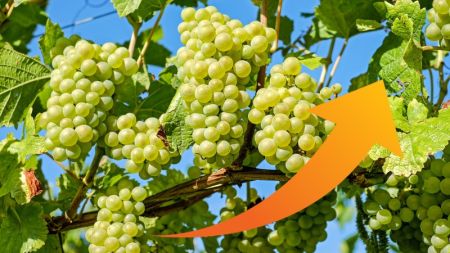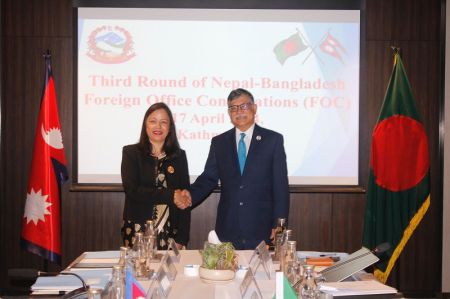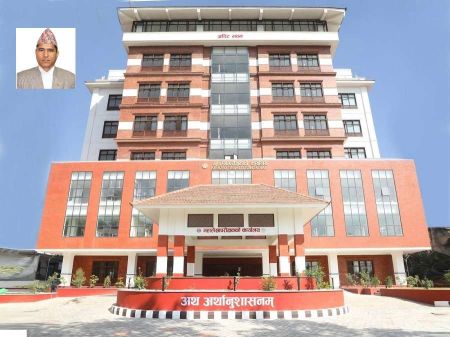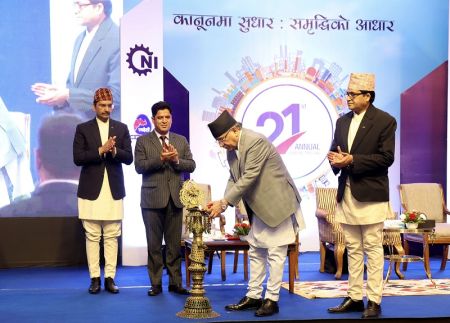.jpg) Sula Vineyards in Nasik is perhaps India’s most popular and most accessible winery. It began in 1997 and now it has developed into a world-class winery. Sula Vineyards recently organized Sula Fest in Kathmandu to promote its products in Nepal. In a conversation with Rashika Pokharel and Angila Sharma from New Business Age, Rajeev Samant, founder of Sula Vineyards, discussed about the journey of Sula Vineyards while also giving some insights into the vineyard. Excerpts:
Sula Vineyards in Nasik is perhaps India’s most popular and most accessible winery. It began in 1997 and now it has developed into a world-class winery. Sula Vineyards recently organized Sula Fest in Kathmandu to promote its products in Nepal. In a conversation with Rashika Pokharel and Angila Sharma from New Business Age, Rajeev Samant, founder of Sula Vineyards, discussed about the journey of Sula Vineyards while also giving some insights into the vineyard. Excerpts: What is the purpose of your visit to Nepal?
There are basically two reasons. One is to conduct this event, Sula Fest, and meet my importers and discuss Sula’s strategy for Nepal so as to improve our market presence and sales here.The second purpose of this visit is to go on a trek to the Langtang range.
As a pioneer wine producer of India, how has been the Sula Winery’s journey so far?
The journey has been fantastic. It is a little bit unbelievable though.From the time when I came back from California to Nasik, I was trying to figure out things to do. We had a small farm in Nasik. Grapes are widely grown in Nasik and all were used for eating purpose only. I then decided to make wine out of those grapes. From that day, I had to face many challenges. It was difficult to get a license. I also had difficulties in finding the farmers to grow grapes to produce wine. Wine culture was not established in India by then. But, this year we will sell 10 million bottles of wine. So, I can proudly say that it has been an amazing journey.
Others soon copied your pioneering venture and there are so many wineries in Nasik itself. How has been the competition?
Within a couple of years, our success started to shine and people saw that good quality wine could be produced in India. Soon farmers in India started to open winery instead to just growing grapes. But, competition always exits. However, for Sula, we have always been ahead of the pack because of our consistency. We have more than 60 per cent market share in India.As such, we are very far ahead of the competition and that is solely because of our quality.
With so many varieties of wine from so many wineries of Europe, USA, Chile and Australia available, why should the consumers go for Sula?
For sure, there are countries producing their own wines. But, Nasik is a new region. People always want to try something new. Ultimately, we are now producing wine in our country, which is a matter of pride for us and the consumers. People choose wine because of their quality and affordable price and if Indian wines can provide these, there is no reason that people should not opt for Indian wines.
Despite being a producer yourself, you are dealing also in imported wine. Why so? What is the strategy?
When we started selling wine, I realized that there is nobody who can sell wine for you. We have to build our own organization that knows how to sell wine by talking to restaurants, shops, and hotels. Once you have that sales channel, it absolutely makes sense to put some imported wines through the same channel. It does not cost you anything more and you don’t have to hire new people. Moreover, everyone wants different wine. People in India not only want Indian wine but also want Australian wine and French wine. So, we provide diversity in this way.
In addition to making wine, Sula Vineyards is also running a resort. What is the logic behind this strategy?
One of the ways that we get people to understand wine is to bring them to the vineyards. It is the best way. When they see the vineyards and the way wine is actually made, they will love it. All over the world, wine tourism has become very big. Associated with wine, the vineyards also provide fresh environment, organic food. This year, we will be receiving a total of 250,000 customers in our vineyard.
Nepal too has some wineries. Are you thinking about collaborating with them or to set up your own winery here?
The wines in Nepal are not grape wine. They are more of fruit wine, which is not the classic wine. 99 per cent of the classic wine that is consumed all over the world is made from grapes. Until Nepal can have some good grapes growing, it is going to take a little time. Somebody here has to discover the right place to grow grapes.
Right now, we are not thinking of collaboration. Maybe, we will have it in the future.
What kinds of changes have been seen in the wine drinking culture and wine market in this part of the world?
In India, wine culture is growing fast. There are a lot of people wanting to quit drinking spirits and drink something gentler. In India, women traditionally do not drink wine. But, the younger generation seems to be very comfortable with it. Things are changing very fast and this is an achievement for us. Sula has the highest proportion of women drinkers of any alcoholic beverage in India. So, atleast 35 per cent of our wine consumers are women.
What is the market share of Sula in Nepal?
Right now, we have very small share of the Nepal market. We have less than 5 per cent market share here, but it is so because we entered here just 4 months ago. If we occupy 8 to 10 per cent market share, it will be very big for us.





















